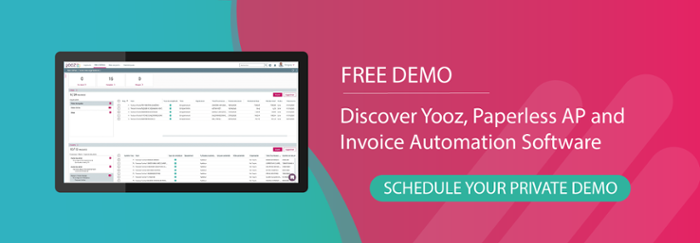The Accounts Payable (AP) function is a critical part of any business's financial operations, managing all the bills, invoices, and vendor payments incurred by the company. AP departments are responsible for reviewing, approving, and paying bills on time to ensure that vendors, suppliers, and other partners are all paid promptly. However, the process can easily become overwhelming and disorganized; an area where fraud and errors can occur if proper controls and procedures are not in place.
One way to streamline the process of auditing accounts payable invoices and prevent Accounts Payable fraud is by using automation.

Why Do I Need an Accounts Payable Audit?
Conducting an Accounts Payable audit is the process of reviewing and verifying the accuracy of invoices before they are paid. This is an important step to implement into the workflow for several reasons.
First, an AP audit ensures accuracy in your financial documents and verifies that any recorded data regarding payments (company liabilities) is correct. This includes checking that the invoice is for goods and services that were received, that the amounts are correct, and that the vendor information matches company records. After all, the company should only be paying for goods and services that were actually received and paying charges for the correct amounts.
Second, the audit process can uncover areas for improvement, detect fraud, and identify unauthorized payments or transactions. For example, auditing Accounts Payable invoices can uncover any duplicate or false payments, such as those made to fictitious vendors or employees.
Third, auditing Accounts Payable invoices can reveal process or policy gaps that might cause unnecessary loses to the company. These discrepancies or irregularities in the invoice processing and payment workflow might indicate internal control weaknesses and help to ensure that proper accounting procedures are in place.
In summation, conducting an AP audit ensures accuracy in the payment process and records, uncover areas for improvement, and provide information on the efficacy of internal controls. All of these allow a business to evaluate its operational efficiency based on actual data and therefore make it critical to regularly audit the Accounts Payable invoice process.
Potential Red Flags Identified Through the Audit Process
Let's examine further some of the potential red flags mentioned above, all of which can be identified via auditing Accounts Payable invoices. These include invoices or statements with:
- Goods or services that were not received or not needed
- Inflated prices of amounts
- Missing or incomplete information
- Fictitious vendors
- Unusual payment terms or methods
The process can also identify duplicate invoices that may contain any or all of the above. The good news is that organizations can take several steps to prevent any of the above, including:
- Implementing proper internal controls: This includes having a clear segregation of duties, setting up proper authorization and approval processes, and ensuring that all invoices are properly reviewed and verified before payment.
- Conducting regular AP invoice audits: This includes reviewing and verifying all invoices for accuracy and validity, identifying any potential red flags for fraud, and ensuring that all payments are made to legitimate vendors.
- Using technology to automate the AP process: By using software to automate the AP process, organizations can improve efficiency, reduce the risk of errors, and improve the ability to detect fraud.
- Employee training and education: Regularly training employees on the importance of preventing and detecting AP fraud can help to raise awareness and encourage employees to report any suspicious activities.
- Establish a whistleblowing system: Encourage employees to report any suspicious activities they observe.
By auditing Accounts Payable invoices through regular reviews and verification processes, identifying potential red flags, and implementing proper internal controls and procedures, organizations can greatly reduce the risk of financial loss and protect their bottom line.
How Does Automation Help with AP Audits
Traditionally, the checks and balance system of invoice auditing has been a manual process. This involves AP staff reviewing each invoice and comparing it to purchase orders, delivery receipts, and other supporting documentation. This process can be time-consuming, error-prone, and cost-ineffective - particularly for businesses that handle a large volume of invoices or have multiple locations.
However, with the advent of AP automation technology, businesses can automate many of the manual tasks involved in invoice auditing. This includes capturing data from invoices, matching invoices to purchase orders (and other documentation), and automatically validating pricing or other details.
Another benefit of automating the invoice auditing is the ability to streamline the invoice approval process. Automated systems can match invoices to purchase orders and automatically route them for approval. This can help to speed up the invoice approval process, reducing the time it takes to pay bills and keep cash flowing. Additionally, automated systems can be configured to send reminders and alerts to ensure that invoices are not missed, reducing the risk of late fees and penalties.
A third benefit to automating the invoice auditing process provides improved visibility and control over AP spending. Automated systems can provide real-time visibility into the status of invoices and the entire approval process - including rapid modifications of the approval routing - allowing businesses to better track and manage their AP spending.
Fourth, an automated system can provide detailed, real-time reporting and analytics which in turn helps businesses to make better strategic decisions.
Finally, by recording every step of the process, automation allows companies to create a digital audit trail that helps determine compliance with any applicable laws and regulations.
The great part? An automated AP invoice process can rapidly do all the above all day, every day versus conducts audits on a weekly, monthly, or even year-end basis.
What Should I Remember?
In conclusion, automating invoice auditing is a critical step in streamlining AP operations and getting control over expenses. By automating the tasks involved in invoice auditing, businesses have an easy solution by which they can improve accuracy, greatly reduce the risk of errors, access data, and speed up the invoice approval process. By doing so, they improve visibility and control over company spending. And, when it comes to AP audits, automation provides the accuracy across the entire process that results in completeness and validity. AP automation is simply better at providing all of the above, consistently and quickly, by avoiding manual inputs.
Simply put, with the right AP automation solution in place, businesses can improve their financial operations, increase efficiency, and gain a competitive edge.
FAQs
How does Yooz's AP automation solution facilitate auditing of accounts payable invoices and ensure compliance with internal controls and regulatory requirements?
Can Yooz's AP automation solution detect and flag potential discrepancies or errors in accounts payable invoices during the auditing process?
How does Yooz's AP automation solution support external audits and facilitate the retrieval of invoice-related documents and information?
Can Yooz's AP automation solution help organizations streamline the auditing process and improve audit efficiency?







